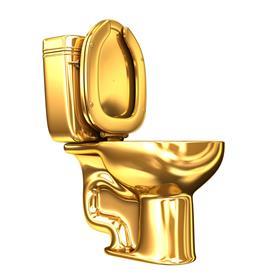The art sector is heavily reliant on social contact, so the uncertainty of the coronavirus lockdowns have created added risks and challenges from pushing sales online
Despite the fine art insurance market bringing in overcapacity for more than a generation, the Covid-19 pandemic has exacerbated the hard market conditions in this sector.
In 2019, the fine art insurance market was showing signs of plateauing, however 2020 forced the typically face-to-face sector online due to coronavirus-related lockdowns.
Ecclesiastical’s underwriting director for art and private clients Dr James Lindow told Insurance Times that a hardening in pricing is beginning to happen, but that a realignment is needed as there are still large exposures.
He said: “Covid-19 has not fundamentally changed the importance of insuring fine art – it may have restricted the fairs, which means there are less transits, but you have got more accumulation.”
Lindow added that the art market has responded to the pandemic as “it has had to”, however the market has only been able to adapt to a certain extent because the industry is heavily reliant on social contact, with the physical accessibility of artwork being deemed necessary among dealers and buyers.

“[Auction houses] need to make sure that the interrogation of the items they sell is as strong and robust as it should be. The top dealers may suffer,” he added.
Insurance Times explores how the fine art insurance market has been impacted by Covid-induced uncertainty and the move to online sales and viewings amid the hardening market.
A robust place
Lindow said the fine art market is in “a really robust place”, however ”to give all these covers, there has to be market proximal pricing”. This means that insurers will need to strike a balance between being fair to the client, yet covering the risk.
“There’s a sense that the market could become artificially too competitive,” he noted. ”It remains to be seen how much that market hardens – does capacity move away from the fine art market? Or is it a safe haven?”
Lindow added that fine art is going to be ”a bit more nuanced” moving forward, perhaps more so than other property covers where rates have had to dramatically increase.
Plus, the market’s profitable past ”has brought in overcapacity”, Lindow continued, meaning it is uncertain whether the sector is going to move in the same direction as other similar classes.
Perfect storm
A number of factors have contributed to hardening prices in the fine arts market.
This includes major losses in 2019, a period of catastrophe events over the last decade - from the Californian wildfires to tsunamis - as well as tensions between China and the US, all of which have had an impact on the art market. This has made top sellers more cautious.
Meanwhile, the financial crash of 2008 impacted investment returns; a similar trajectory is expected for the continuing economic downturn post-pandemic.
Lindow refers to all these events as a “perfect storm”.
Regarding 2019 trends, Lindow added: “Insurers realised that returns needed to go back to what they used to be – making a sensible underwriting profit. The market has moved into this position more cohesively than in the past.
”But, many underwriters don’t remember the last hard market, it’s been soft for so long – we are talking 20 years since the last [one].”
Newer underwriters and brokers may not have any experience of these hard market conditions, he added.

“How do they pitch the message to the client that there is going to be potentially an increase in premium this year when every other year they have been trying to get premiums down?” he said.
Buoying the market
Lindow predicts, however, that online sales will “buoy the market”, especially with customers spending more time at home. Sotheby’s and Christie’s sold 13 artworks for more than $1m last year via online auctions, for example.
Lindow added that art insurers and brokers will need to react to any changes to insurance regarding online sales, even though this process should be no different to selling art in its normal capacity. Issues regarding stock, however, could arise.
“Great art simply isn’t coming to market. There’s a real human side to what’s going on in the art market; it’s not just a potential contraction of sale values,” Lindow explained.
For example, this year a drawing by Jean-Honoré Fragonard sold at Christies for just over $1m while Botticelli’s artwork sold for $92.2m in Sotheby’s New York, according to art market website Artnet.
This is compared to 2020, where one item – Frances Bacon’s Triptych sold for $84m in Sotheby’s, meanwhile in 2019, nine artworks – eight of which were paintings – sold for over $50m. The ninth was Claude Monet’s painting Haystacks, which sold for over $100m.
But, “as the market gets back on its feet, we will see a flurry of transit activity”, added Lindow. ”I imagine underwriters will have some challenges with accumulation at storage facilities.”
Transit and accidental damage, therefore, makes up a large part of fine art losses. Insurance in this field is often into split into two buckets - items on premise and in transit. “When an artwork leaves its wall or pedestal, it’s very exposed,” Lindow said.

Another challenge in fine art online sales is attribution - if a piece of artwork is not as described, it could raise a professional indemnity issue for the auction house.
Extra consideration
For Daniel Lloyd-John, chief executive and founder of Broadway Insurance Brokers, the twin aesthetic and financial values of art means that insuring it requires special consideration, especially around how the art is displayed.
“Art is something which – depending on the reputation of the artist – can increase or drop in value. There’s a need, therefore, to be aware of patterns in the wider art market and to make sure that insurers are aware of how those changes might influence the cost of replacing, repairing or restoring items,” he explained.
Furthermore, he pointed out that art theft is “very common”, warning that only a small fraction of stolen items actually resurface. One example of this is Maurizio Cattelan’s 18-carat gold toilet that was stolen whilst on exhibition at Blenheim Palace in 2019.
Lindow added that while theft is common, many pieces can resurface almost a decade down the line.
Lloyd-John warned against sharing artwork on social media to guard against theft, recommending using traceable liquid SmartWater to mark pieces and help with detection.
“From our experience of dealing with these sorts of matters, it’s clear that insurers differ in their attitudes to protective measures, which they believe to be either suitable or effective,” he added.
Christies and Sotheby’s have been asked for comment.
What can be insured under a fine art insurance policy?
A collector might need a fine art policy if they have:
- Fragile, delicate or very old original items.
- An item that is unique and difficult or impossible to replace.
- Artworks held museums or exhibitions.
- Valuable items held in storage.
- A collection of objects that would decrease in value if one was to be damaged or lost.
What does a fine art insurance cover?
All policies cover perils like fire and theft, but they also compensate for loss of value and accidental damage.
Typical policy exclusions include things like war, nuclear, moths, vermin and the tendency for physical objects to deteriorate due to external forces.
Most fine art policies will cover ’all risks’, but this is a slightly inaccurate term because there are almost always coverage exclusions.
Is there a risk of underinsurance?
Tara Parchment, head of private clients at Brit Insurance, said that underinsurance of art is a potential problem.
She said: “It is estimated that up to 75% of UK households are underinsured, [so] when individuals are carrying out home improvements or adding to their collections, this risk becomes even greater.
“We have also found that existing art and collections can see values rise considerably, so regular valuations are recommended to ensure your insurance policy keeps pace.”
How do insurers value art and calculate claims?
Although the value of artwork is often subjective, many carriers use these guidelines for premium calculations and claims:
- The price at auction or market value at the time of loss.
- Purchase price.
- Projected replacement cost.
- Its declared value.
Hosted by comedian and actor Tom Allen, 34 Gold, 23 Silver and 22 Bronze awards were handed out across an amazing 34 categories recognising brilliance and innovation right across the breadth of UK general insurance.





















































No comments yet